Whether you use it as a content distribution platform, a streaming service, or an online portfolio for your company’s video content, at the end of the day, YouTube is essentially a search engine.
And just like you’d measure organic search performance for your website, you want to be sure you’re measuring the performance of your YouTube content. Not only is it a great way to see how your content is landing with your audience, but understanding your analytics is key to refining your YouTube marketing strategy.
Even if you’re not a data scientist, here are the metrics you should keep an eye on:
You’ll find these metrics in the Analytics section of YouTube Studio (click on your profile icon > YouTube Studio > Analytics). Broadly speaking, YouTube buckets these metrics into two categories—Content and Audience—but there’s a lot to dig through, so let’s dive in.
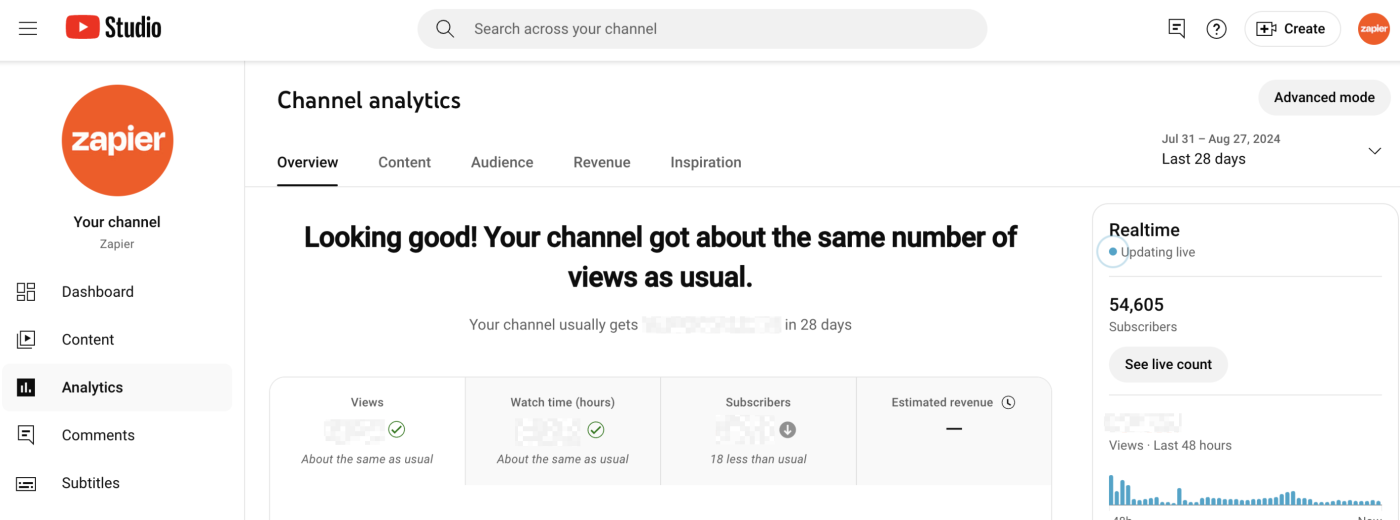
Understanding your YouTube content performance
In order to maximize the ROI of your YouTube content, you need to know how people are finding it—and how many of those people actually watch your videos. The Content section gives you a lot of great ways to figure that out.
You’ll need to choose whether you want to look at the performance of your videos or your Shorts—for this piece, we’ll look at video analytics.
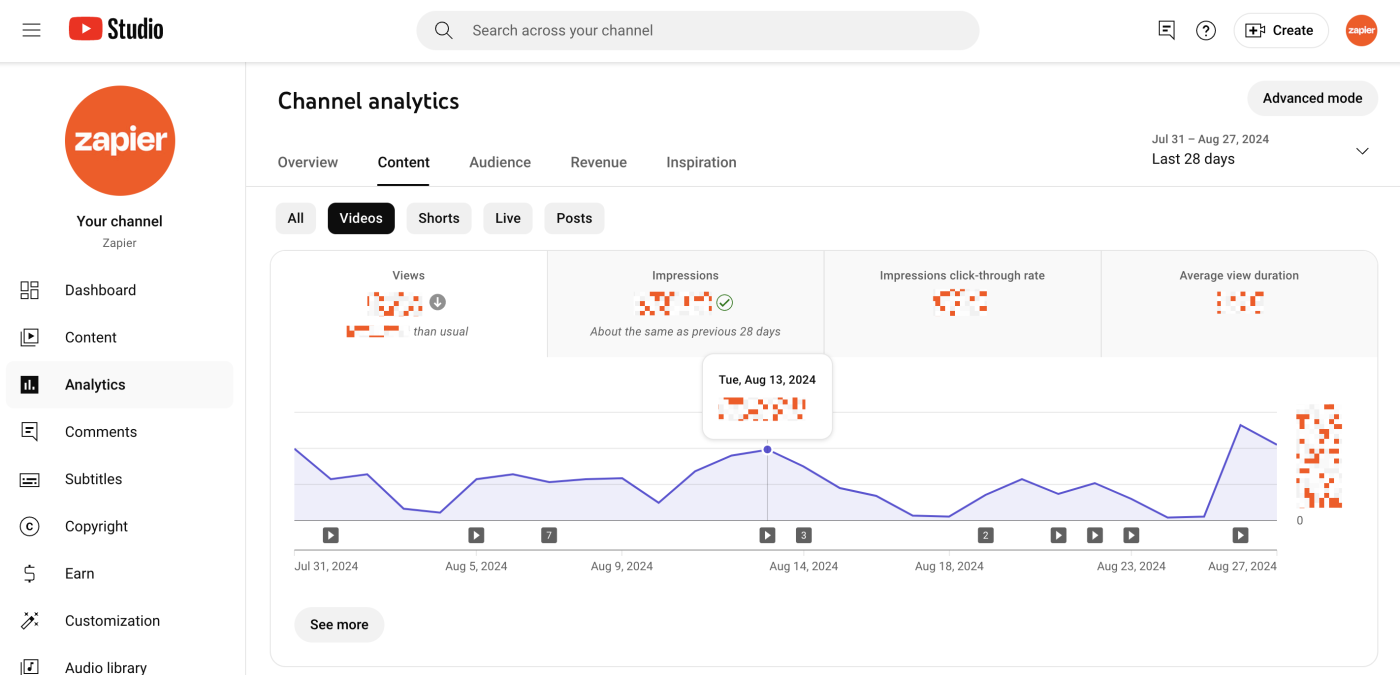
Total number of views
Right at the top of the Content tab, you’ll find the simplest YouTube metric of them all: how many views your channel has. You can consider this a general gauge of the effectiveness of your content and the overall health of your channel. The more people who watch your videos, the more likely it is YouTube’s algorithm will serve them to new potential viewers—so keep an eye on this metric whenever you try new things with your videos.
Impressions and click-through rate (CTR)
Impressions refers to the number of times your video content has reached a potential viewer. CTR, on the other hand, tells you the percentage of impressions that became views: how many of the people who saw your thumbnail actually clicked on it.
If you have low impressions, it means you need to work on your keyword optimization to get your videos in front of more people. If you have high impressions but a low CTR, it might mean that your keywords aren’t matching the search intent of your users. Or it could mean that something about your title, description, or thumbnail isn’t resonating with viewers. They’re being given the option to watch your video and actively choosing not to.
Average view duration
Similarly, you’ll want to look at how long the average viewer spends on your videos. This metric is important for determining whether your content is actually resonating with the people it reaches. The longer people spend watching your videos, the more likely it is YouTube’s algorithm will serve them to new viewers.
Traffic sources
If you scroll down, you’ll see a section that lays out how folks found your videos to begin with. This can include YouTube search, playlists, suggested videos, Google Search, external websites, paid ads, and more.
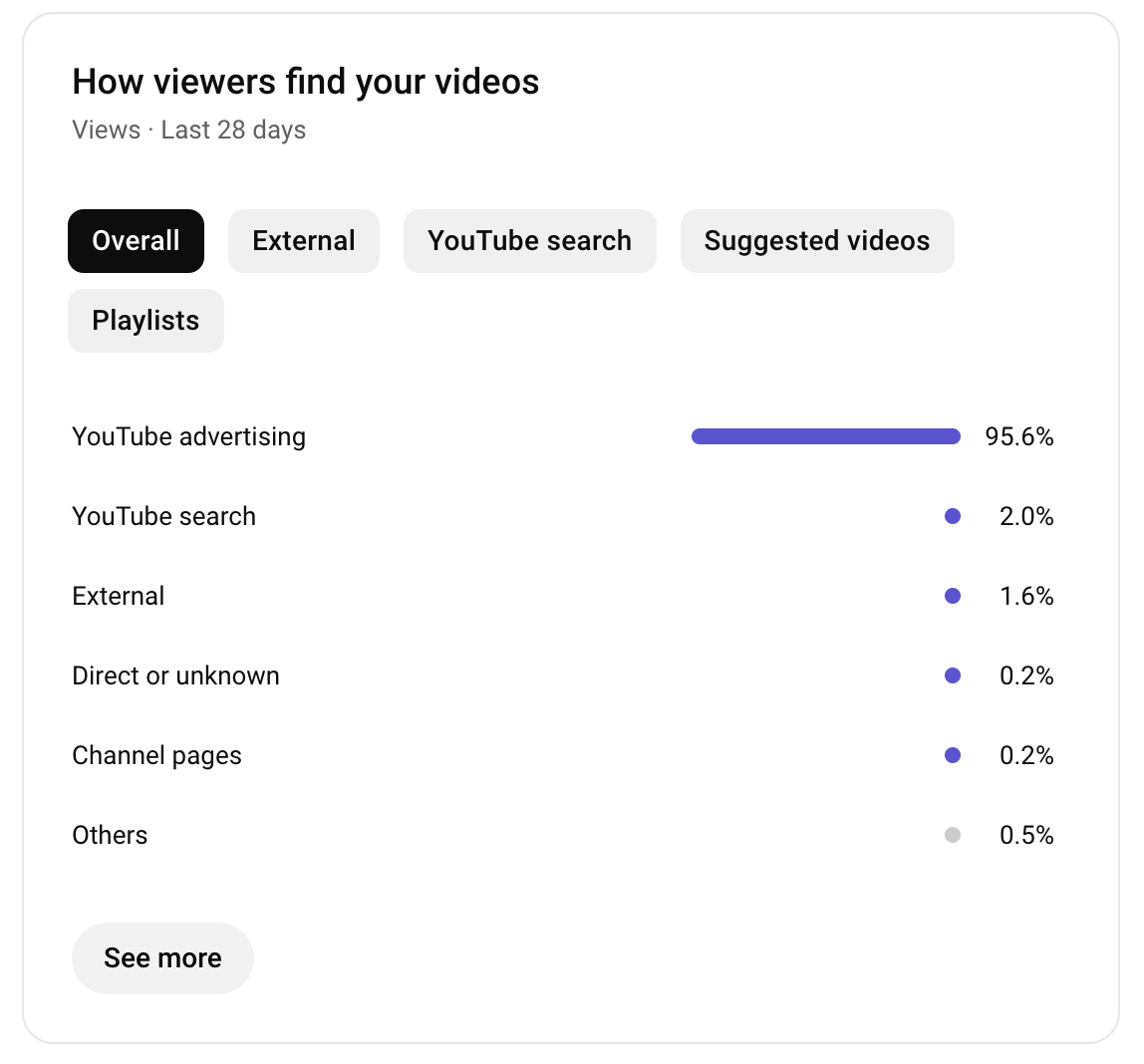
Get to know your audience on YouTube
You’ve probably spent a lot of time finding your target audience, and your video content should be tailored to that audience. But YouTube analytics can also help you refine that audience even more and home in on your video audience specifically.
Under the Audience tab, you’ll find relevant YouTube metrics that will help you understand who your audience is—and how they behave.
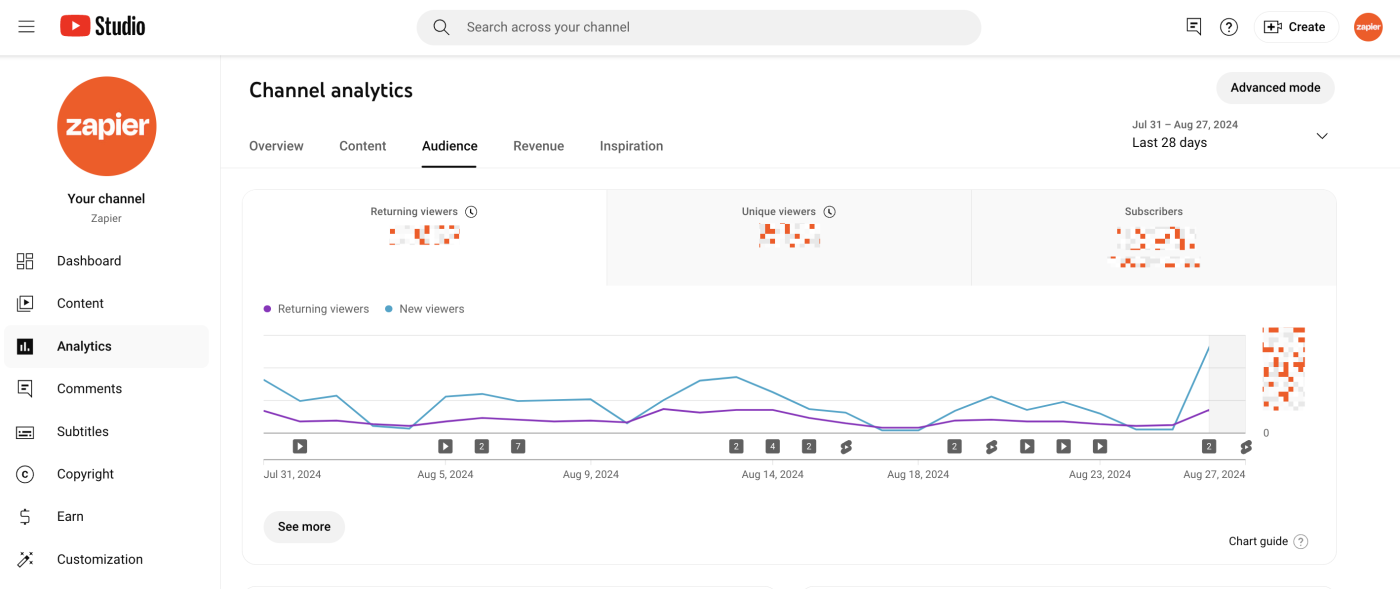
Returning viewers, unique viewers, and subscribers
These metrics are a great way to determine how many new people are finding your content, how many of them are coming back for more, and most importantly, how many of them are subscribing to ensure they see your content in the future—all of which you can use to determine the overall health of your channel.
Other content your audience watches
Below the basic viewer and subscriber tabs, you’ll see a more in-depth breakdown of your audience. We’ll talk about audience demographics in a moment, but there are some even more valuable metrics in this section:
-
Channels your audience watches
-
What your audience watches
-
Formats your viewers watch
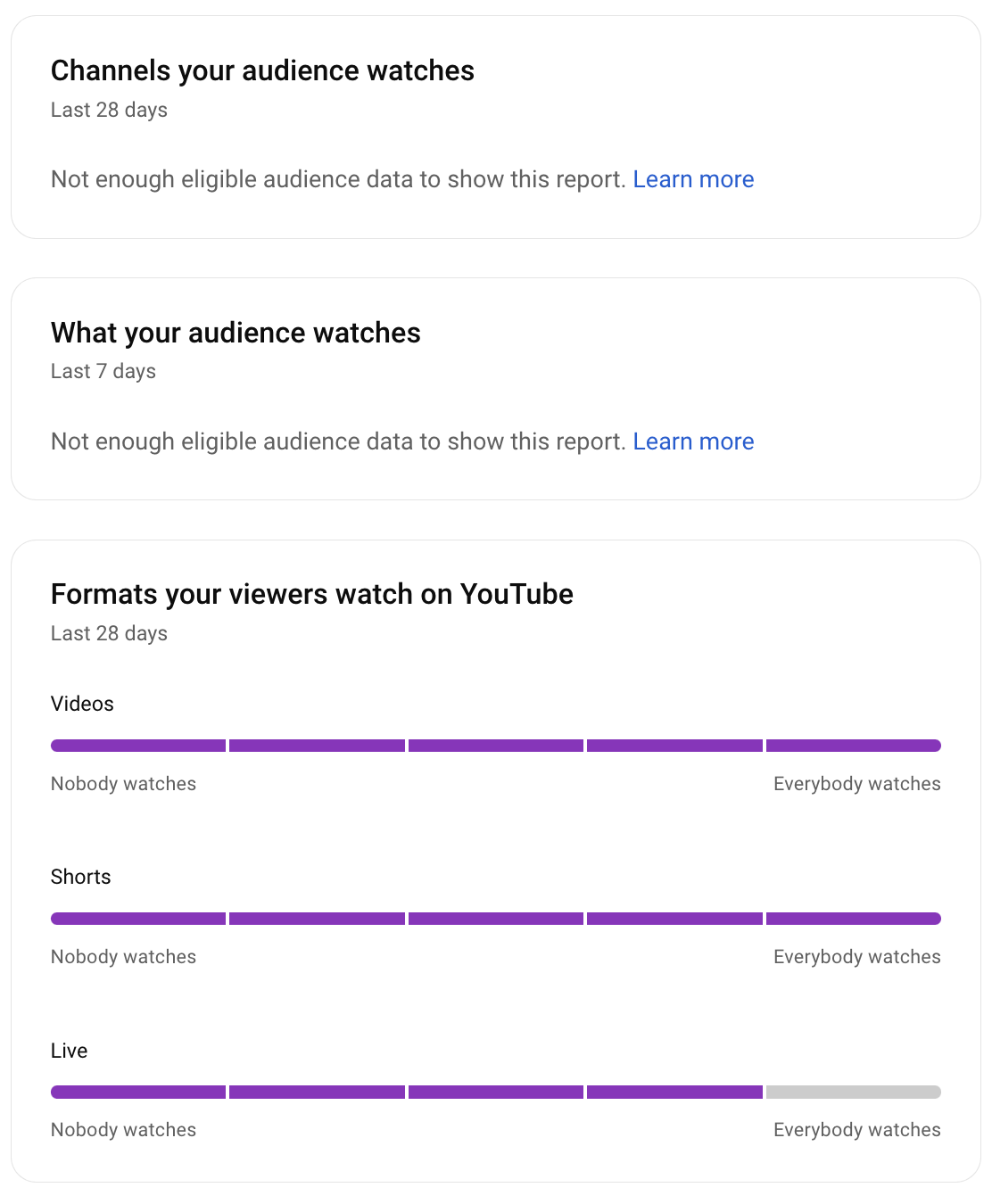
These metrics can give you a holistic view of what your audience finds interesting. That’s a great tool for developing your own content—instead of making inferences from demographic data, YouTube shows you exactly what your audience likes to watch (and in what format).
Audience demographics
Want to know more about what your audience has in common? You’ll find demographic info like language, age, and location in the Audience section, and each one will give you the big picture of who’s behind the screens and what they have in common. This can help you adapt and customize your content and make it as personalized as possible to the folks who are watching. You can even see what the top subtitle or closed caption language is for your content—so you can better adapt that content for international audiences.
Watch time for subscribers
This metric gives you the total number of minutes your subscribers have spent watching your videos. It’s not just so you can pat yourself on the back: YouTube recommends and promotes videos with high audience retention, and your subscribers are viewers who already showed an interest in your content. Whenever you’re trying new things with your content, keep a close eye on this metric, as it can be an early indicator of how well your regulars are reacting to the changes.
Boost your audience engagement on YouTube
Getting someone to watch your video is the first hurdle, but just like on social media, the ultimate goal is engagement. Engagement from your viewers means you’re forming a connection and building brand awareness. Here are the YouTube engagement metrics you’ll want to focus on.
Likes, dislikes, and comments
This one isn’t a part of the top-level YouTube analytics, but you can’t discuss YouTube engagement without touching on the likes and comments on each video.
YouTube bundles these metrics into a section called Interactions, and it can be a little difficult to find if you’re not super familiar with YouTube Studio. To get there, click See more on the Analytics dashboard.
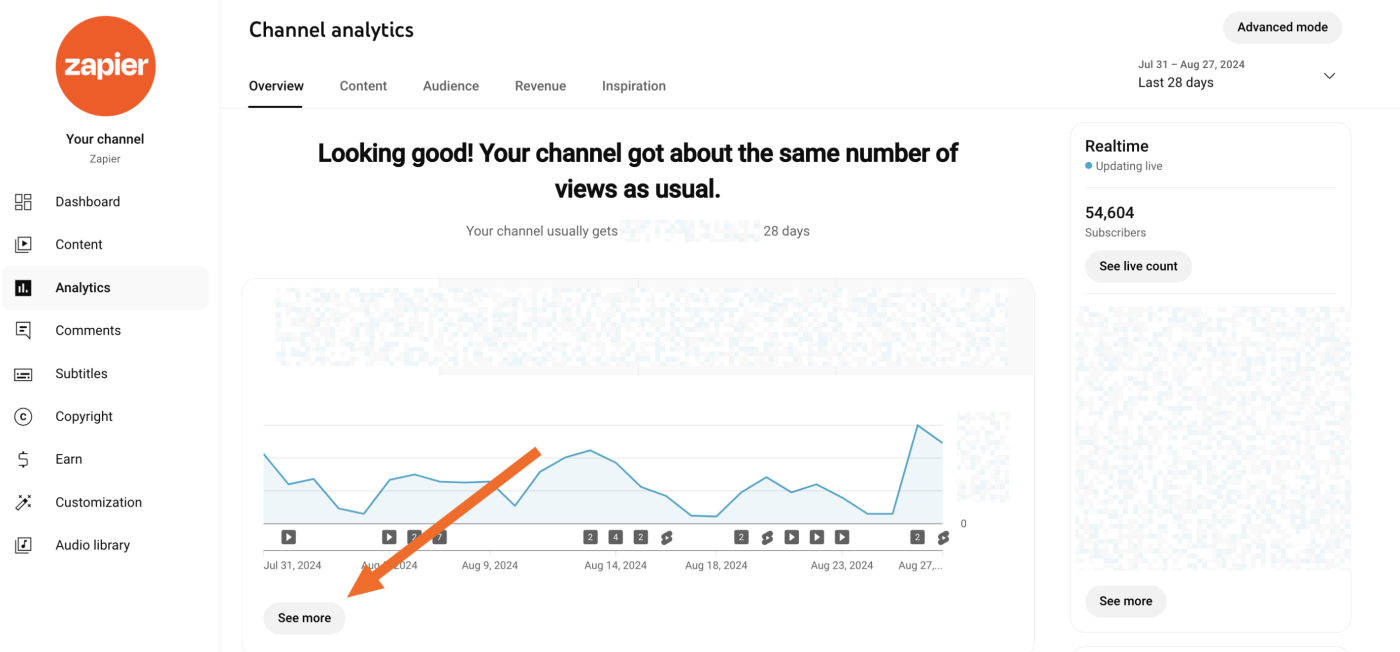
Then click the Select secondary metric dropdown, choose More metrics, and look under Interactions for likes, dislikes, and comments.
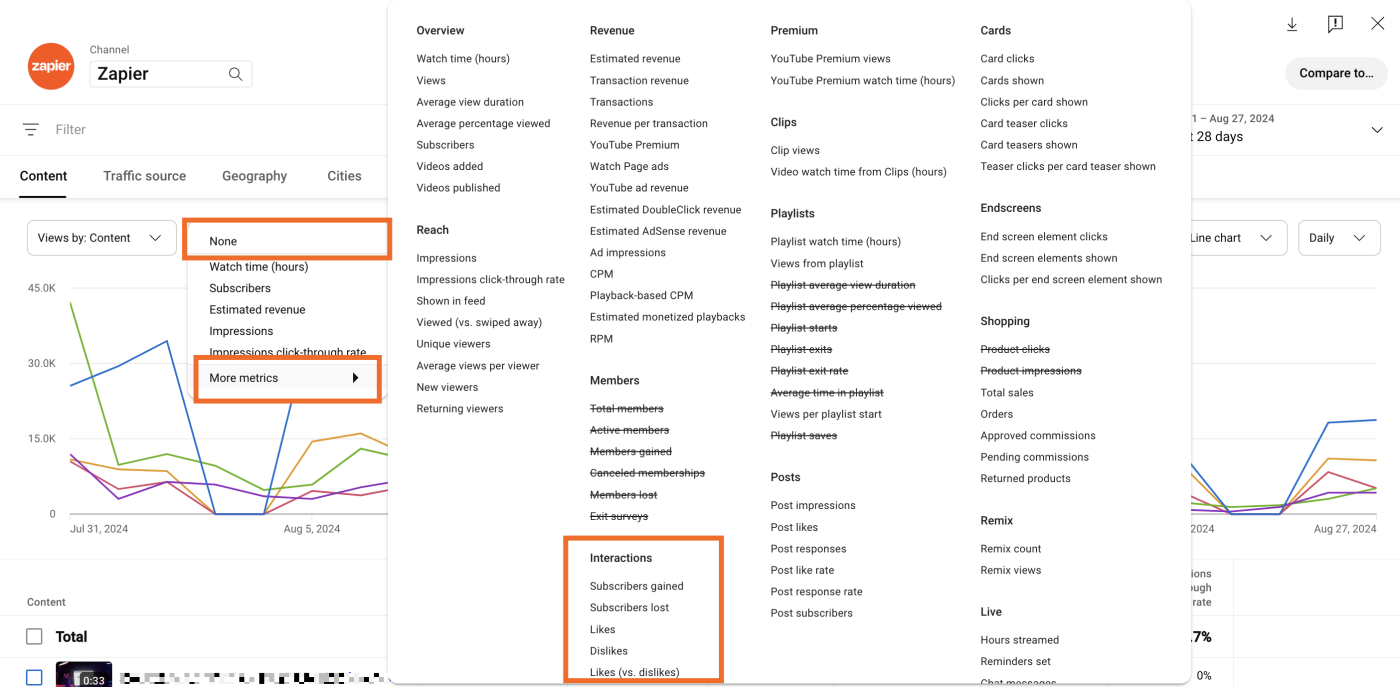
Likes and comments can give you first-hand, detailed feedback on how your audience responds to your content. To get started with these metrics, try looking at your best-performing videos and reviewing their individual like/dislike ratios, plus the overall sentiment on their respective comment sections.
Use this information to inform your content creation strategy by focusing on what seems to be receiving the most accolades.
Key moments for audience retention
Under the Interactions section, you can also see subscribers gained and subscribers lost. By analyzing which videos are most likely to gain you new subscribers—and which cause your audience to disengage—you have a good starting point for testing and iterating on your content.
Automate YouTube
To make the most out of YouTube, you need to go beyond view count. YouTube metrics that analyze your video reach, engagement, and audience will help you know what’s resonating and give you a better understanding of how to distribute your content.
To have more time to focus on that content, you can automate your YouTube operations with Zapier. Send notifications for new videos, share videos on social media, automatically upload new videos, and connect YouTube to thousands of other apps. Learn more about how to automate YouTube, or get started with one of these pre-made workflows.
Zapier is the leader in workflow automation—integrating with thousands of apps from partners like Google, Salesforce, and Microsoft. Use interfaces, data tables, and logic to build secure, automated systems for your business-critical workflows across your organization’s technology stack. Learn more.
Related reading:
This article was originally published in January 2022 by Victor Blasco from Yum Yum Videos. The most recent update was in August 2024.